October 2019 Grant Recipients
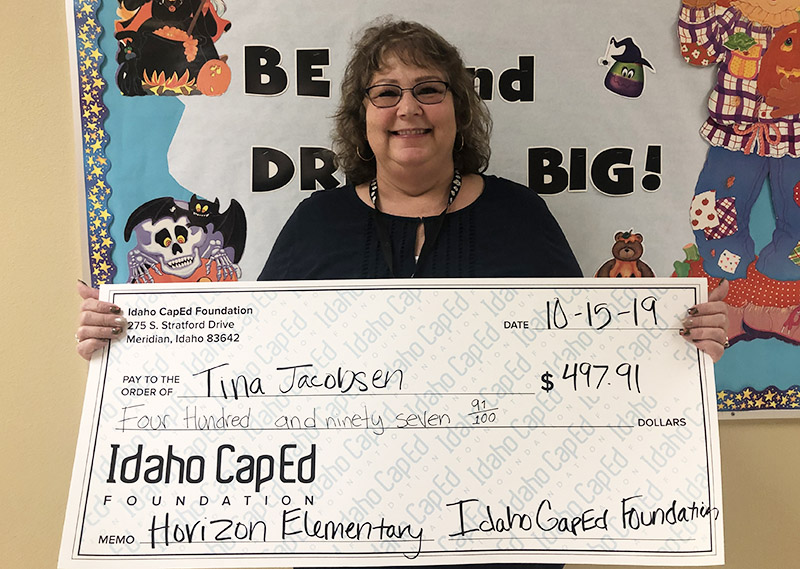
Helping Students to Concentrate with Wobble Chairs
Tina Jacobsen - Horizon Elementary, Jerome
$497.91
I teach small groups of students reading strategies to improve their literacy skills. My project is to incorporate wobble stools into my classroom because students come to school energetic and eager to learn, but they cannot sit long enough to learn the new concepts being taught. The wobble stools would replace the traditional hard plastic chairs in my classroom. Some students need motion to focus and wobble stools would allow them to move which helps them to concentrate and learn new reading strategies. It has been shown that students actually learn better while they are moving and this is also true for kinesthetic learners. Better focus translates into more learning and success for the students!
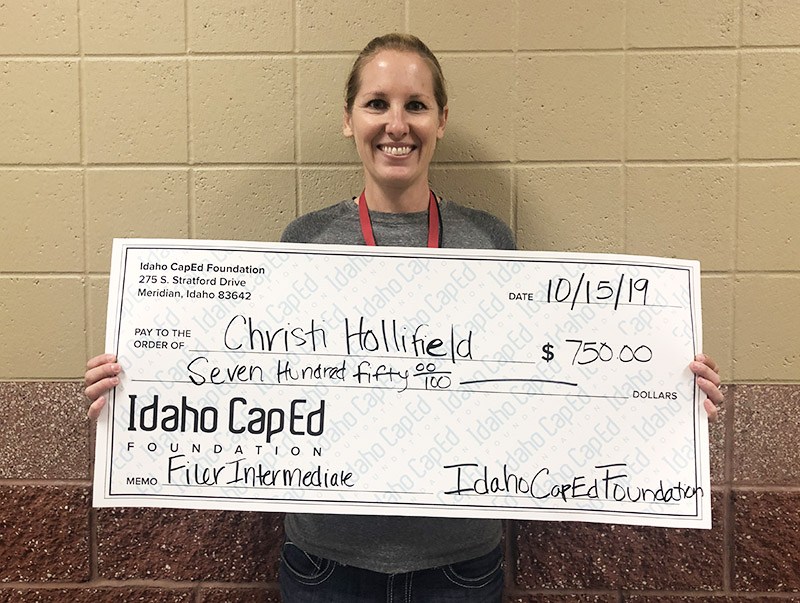
Drummersize
Christi Hollifield - Filer Intermediate School, Filer
$750.00
Drummersize, a form of music therapy, combines physical education and music. Yoga balls, milk crates, and drum sticks create a unique fusion of fitness and aerobic drumming that combines low impact aerobics and drumming on stability (yoga) balls. Students learn the choreography along with musical terminology and then use physical activity to use sticks to beat the balls as a band together. This class is designed to give participants a fun way to work out, engaging in general cardio and body strengthening while tapping into the benefits of music and rhythm. Drumming is an easily accessible activity which burns calories and improves mood. Drumming is also a great way to self-express and make music (without any prior skills), while increasing blood flow throughout the brain, which promotes improved cognitive performance and promotes relaxation. The last 10 minutes of the program focuses on cool down and relaxation, leaving students refreshed and energized. Several students who get overstimulated with noise and the drummersize program could help them gradually overcome these issues.
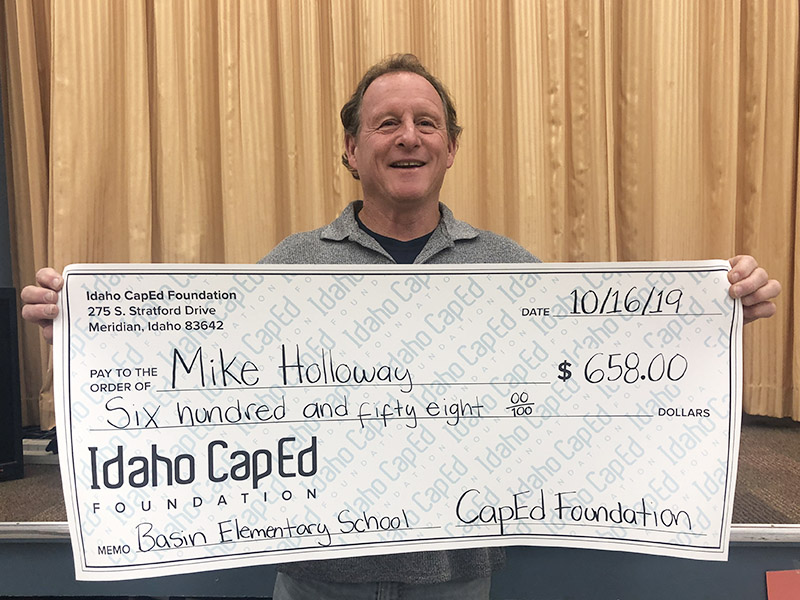
Enhancing our STEAM Lab
Mike Holloway - Basin Elementary School, Idaho City
$658.00
We renovated a portable classroom this past summer into a STEAM lab which we call "The Innovation Station" where Pre-K through 6 grade students attend either weekly or every other week. Stations in the lab presently include a lego wall, paper air plane launcher, 4 computers, 300 plastic cups, kiva blocks, an 800 piece plastic straw construction building kit, and mini robots. We are continually looking for stations that will stretch creativity and provide stimulating activities for all grades. With this grant, we will purchase circuit boards and mini sumo-bots as additional learning stations. Snap circuits provide students an exciting, hands-on introduction to electronics. The kit we would like to purchase provides over 750 different projects with real circuit components that snap together to create working electronic circuits and devices. These components combine to create working circuit boards just like the ones found inside televisions, radios, and other electronic devices.
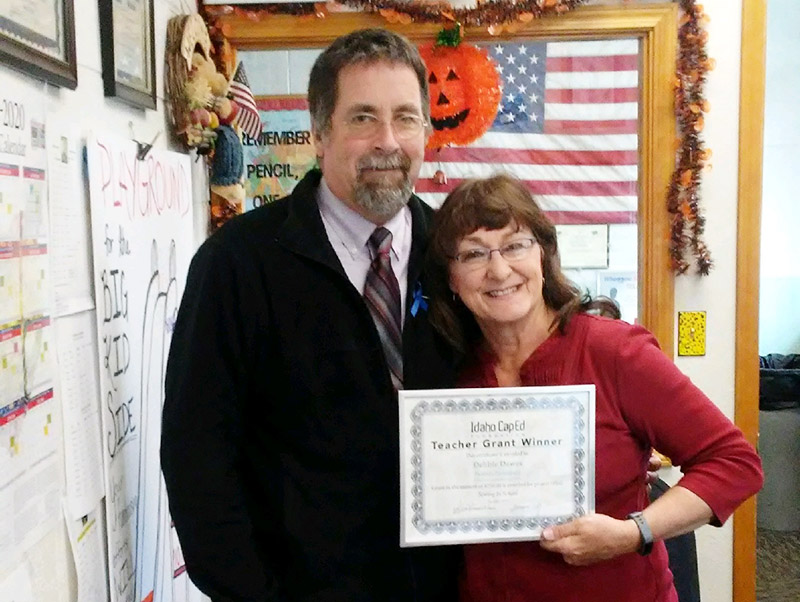
Sewing In School
Debbie Dawes - Potlatch Elementary, Potlach
$750.00
Sewing In School is designed to introduce sewing in the elementary school. Our 4th grade does an annual project called the PIE Project in which they read the book Pie by Sarah Weeks. Students read a chapter per week, discuss literary elements such as character, setting, and plot. Students then make and bake the pie described in that chapter. Parents and volunteers supply ingredients, knowledge, and assistance to the students in this endeavor. Students and helpers then enjoy the pies and share with school staff.
A key ingredient in the project is the construction of an apron for each student using fabric and supplies provided by parents or community. Students go through the entire procedure of creating a completed garment by learning to cut out and adjust pattern, choose color and pattern of fabric, thread a machine and all stages of sewing using mathematical concepts such as measurement, fractions, geometry, addition, and multiplication. They engage in the art elements of design including line, color, and pattern. The students create two aprons; one for themselves to use in the classroom and a second apron to give as a gift for a parent or caregiver. Our goal is to purchase 10 new, simple sewing machines making it easier for students to operate and for teacher and volunteers to service and maintain.
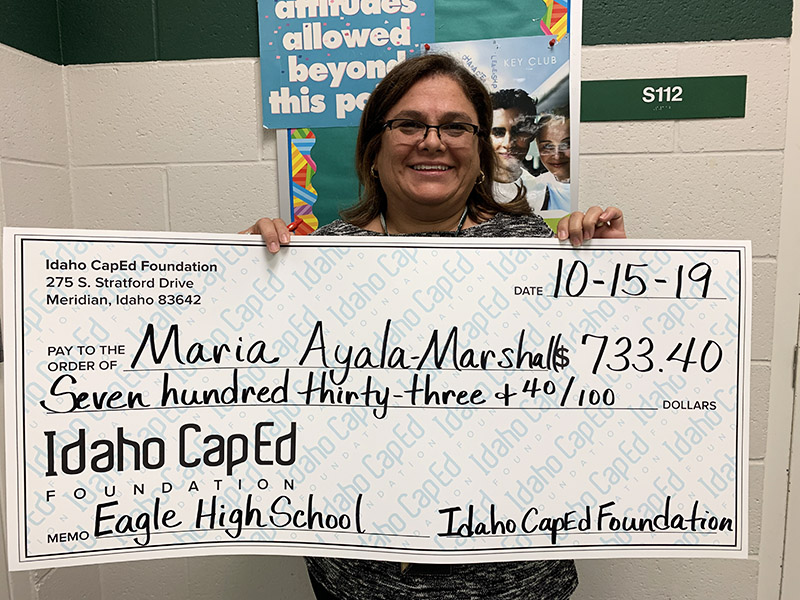
Reasoning Boost
Maria Ayala-Marshall - Eagle High, Eagle
$733.40
My students will use the Reasoning Boost board games for strategy, math reinforcement, and brain development. Games allow for logical thinking and reasoning skills. These board games provide an opportunity to practice math and interact socially with peers, away from their cell phone screens. I will have Board-Game Day on Fridays with my Math II Classes. Having my own kids play games growing up provided them with healthy competition, strategy, and reasoning. I would like for my students to be able to have those skills too. Board games will also provide my students a great break from their technology and a time where there isn’t a screen in front of them. The reasoning skills and the reinforcement of math concepts will help my Math II students with algebraic concepts throughout the year. Some of the concepts that the board games will provide my students are prime numbers, spatial visualization, and logic.
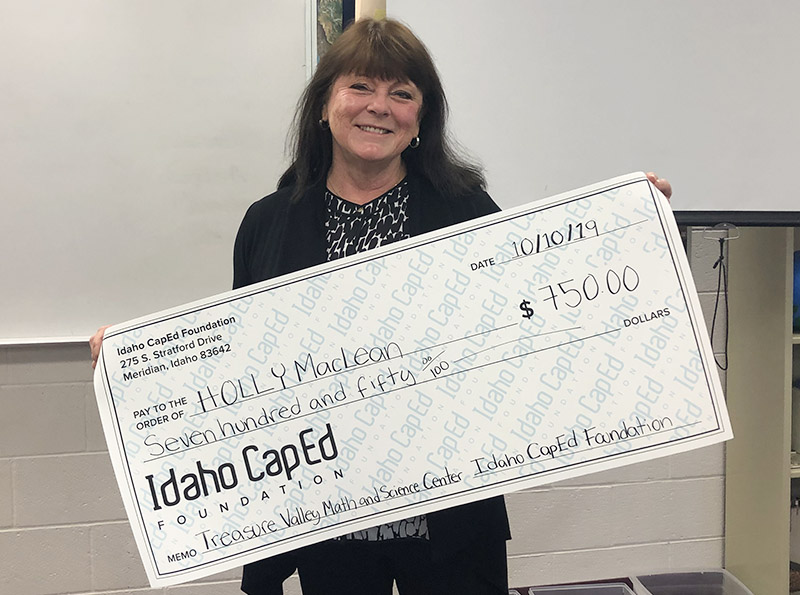
Science Sensors for Student Labs
Holly MacLean - Treasure Valley Math & Science Center, Boise
$750.00
Our school is a magnet program available to students from across the Treasure Valley. Students in grades 7-12 participate in advanced STEM studies in a student-centered, hands-on instructional setting. We began serving students in 2004. At that time, the Center was able to purchase science sensors for use by students in a wide range of science and math courses as they conduct labs or activities requiring sensors for collecting data. In particular, the physics, chemistry, environmental science, and biology courses used the sensors heavily. In the 15 years since these were purchased, technology has changed greatly. The computers that the original sensors connected to have been replaced by newer technology that no longer provides options for sensors to connect to them. Newer technology supports next generation sensors that actually interface with student cell phones and with laptop computers wirelessly. With this grant, we seek to replace heavily used sensors for use by students in the physics, environmental science, and chemistry classes, so that students are once again able to conduct investigations in labs, gather data and analyze the data within a meaningful context.
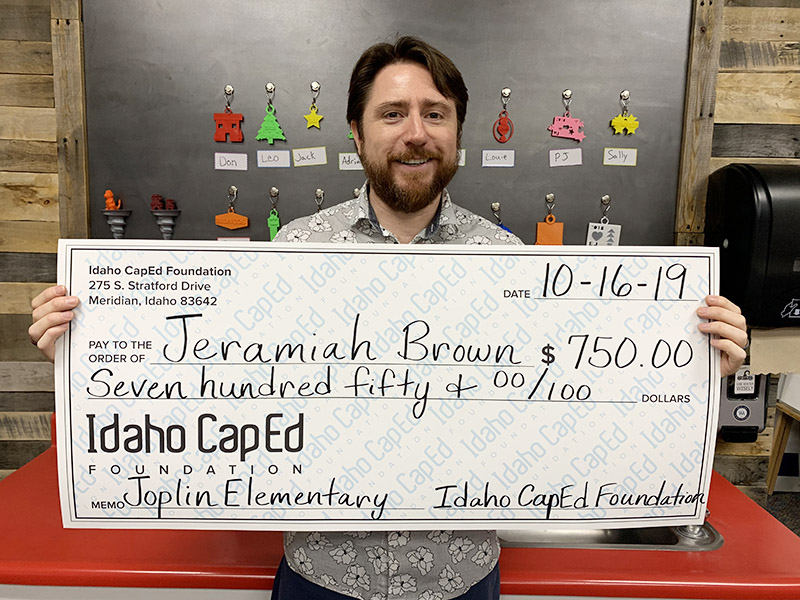
Innovative Real World Applications in STEM Fields and Kindness
Jeramiah Brown - Joplin Elementary School, Boise
$750.00
This year in my STEM Lab, my elementary students will conduct Skype meetings with Idaho Special Needs Educators to learn about the students they teach. Students that are blind, deaf, have cerebral palsy, and other disabilities. The educator will discuss what types of challenges they and their students face with limited or expensive materials. Challenges like how a blind student can't use two different colors of math cubes to practice adding to 10. After the meeting, my students will spend a few weeks to brainstorm ideas, collaborate in groups, use a CAD program to design; 3D print, test, and improve, send the product to the educator, have another meeting for feedback, and then improve the design or print more items to send to the educator to use with their students for free! This is a real world experience in growing STEM fields involving product collaboration and design, teamwork, and helping their fellow Idaho students. With the grant, we will be purchasing a wide angle webcam and microphone, graph notebooks, measuring tools, and filament.
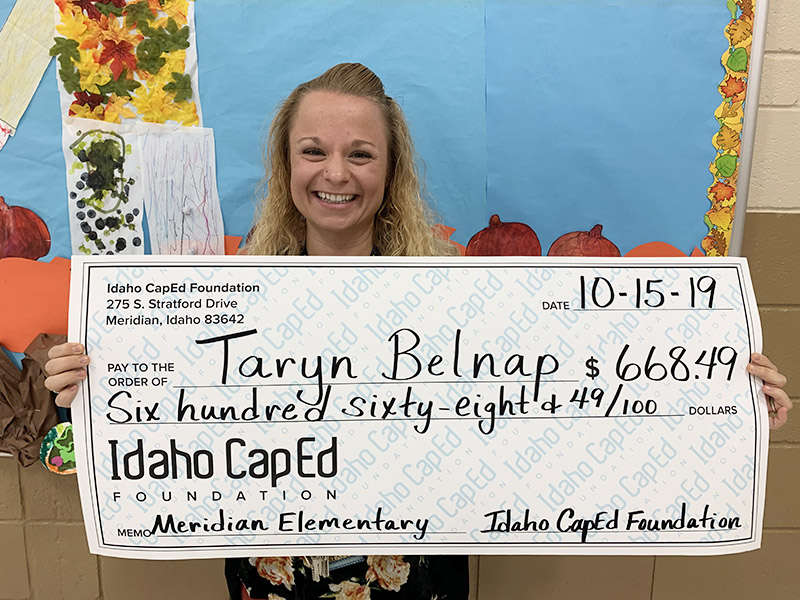
Excellence in Non-Fiction Learning
Taryn Belnap - Meridian Elementary School, Meridian
$668.49
The benefits of nonfiction books are numerous, but not everyone has the time to go through the many books to see what information is outdated and factual. Our school has been around for years and with that comes years and years of outdated materials and information. At our school, our Non-Fiction section has an average age of 1994-2002 publication date; think about all that has changed in the last 20 plus years. I want to be able to give students resources to new and factual knowledge. After all, you can learn so much from non-fiction! Reading about the real experiences of others can teach students valuable life lessons, helping them avoid pitfalls, and make the most of new opportunities. Their concentration will improve. Reading requires focus, and by making a habit of concentrating, they'll find it easier to be more present and more productive. Fifteen minutes of reading or listening to a nonfiction title will put students in a more focused mindset and expand their minds and thoughts. I want to give my students a chance to explore the wide world of nonfiction without the worry that the information lacks truth and depth. Children's non-fiction books can help motivate reluctant readers by capitalizing on their curiosity and interest in the world around them!
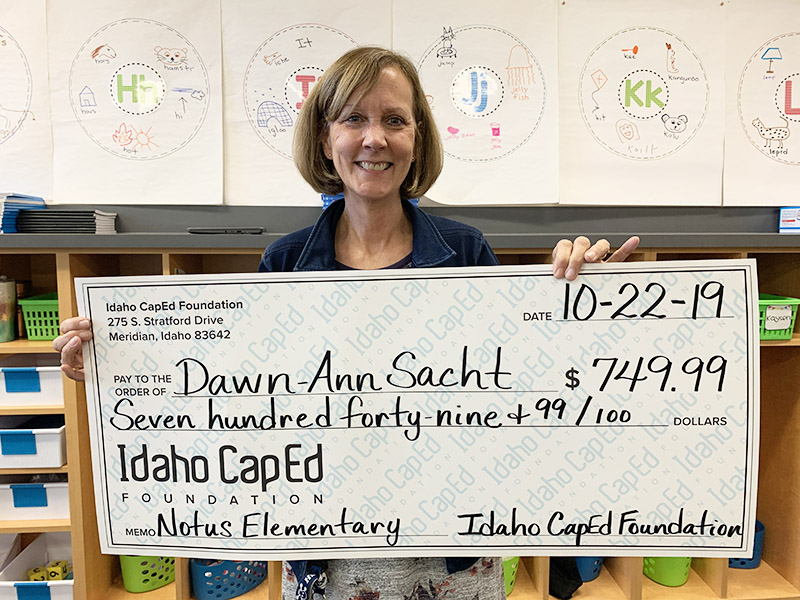
Sensory Pathway to Successful Learning
Dawn-Ann Sacht - Notus Elementary, Caldwell
$749.99
Over a quarter of our student population has individual learning plans with various needs and levels of support. Twenty percent of the overall school population receive special education services including Sensory Processing Disorder, Autism Spectrum Disorder, and ADHD. With all types of over-stimulation from various factors in a student’s environment, having a sensory path in our hallway would support the sensory diet of all students and the mission of staff to provide meaningful learning. The sensory hallway would be placed in a shared space so all students can access it readily and would be used by 200-plus students in grades K-6th. Students would have the option to use this wall/hallway before school, recess, during the after school program, during scheduled sensory breaks, and whenever school events are hosted. The purpose of the wall is not to distract students, but to provide them with a safe and constructive outlet for behaviors that might be seen as distracting in a traditional classroom environment. Using a sensory wall/hallway, students would be able to have a safe and calm space to center themselves and work on their confidence in using appropriate coping skills.